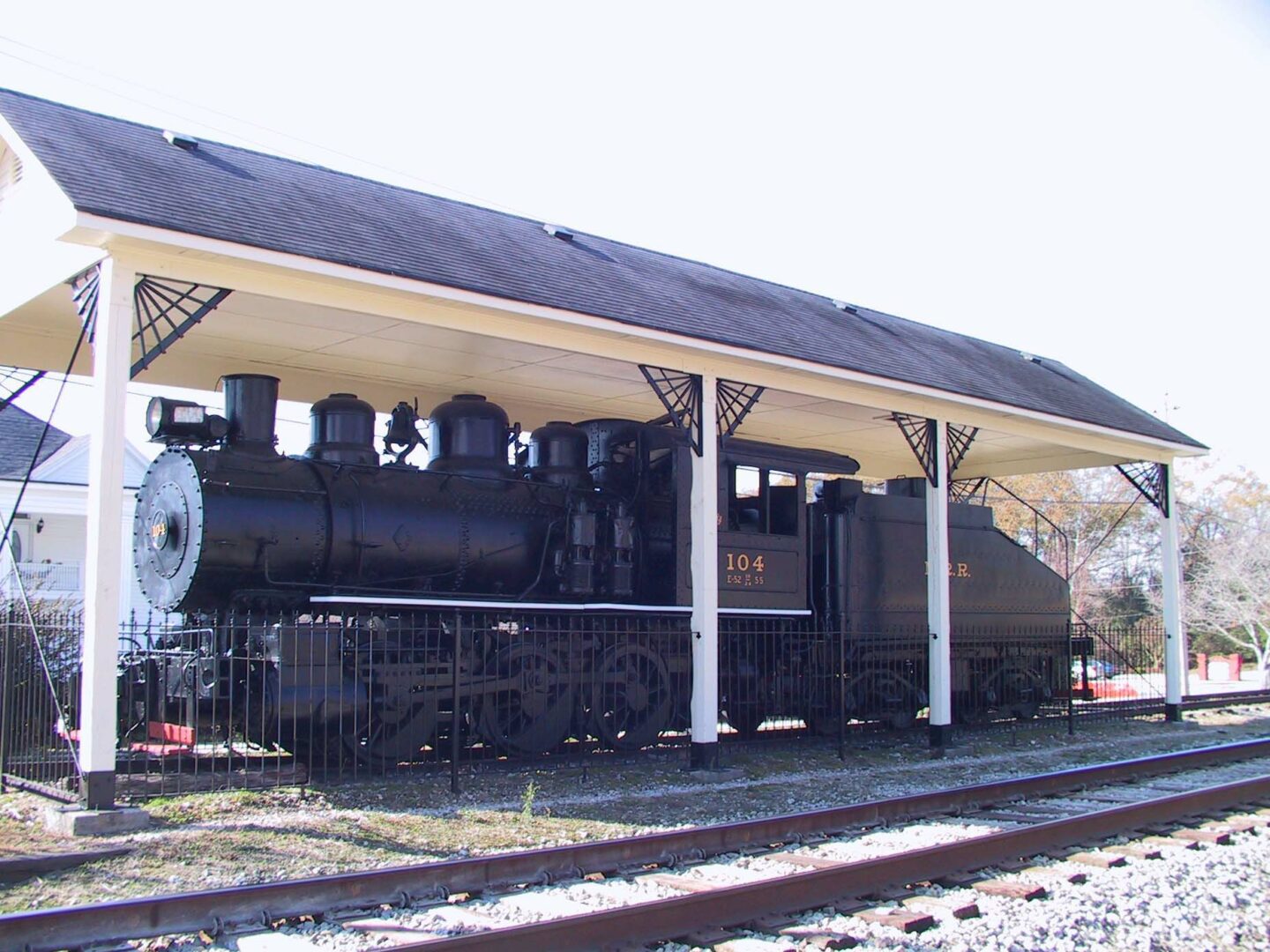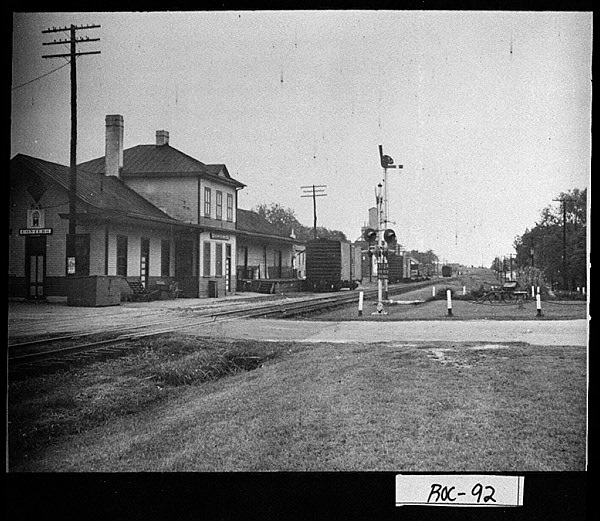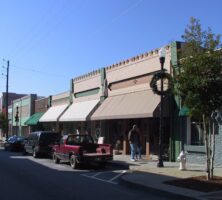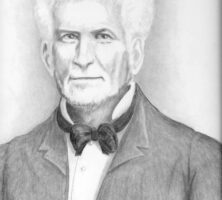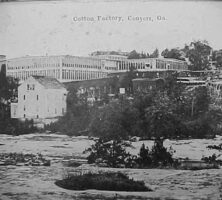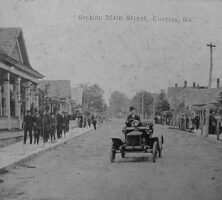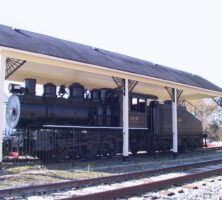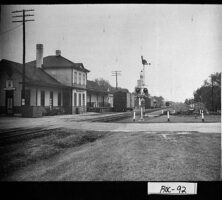Conyers, located twenty miles east of Atlanta on Interstate 20, is the seat of Rockdale County and part of the Atlanta Metropolitan Statistical Area.
The known history of Conyers and Rockdale County dates back more than 10,000 years, when Native Americans, referred to as the “Mound Builders,” made the area their home. The Great Indian Road, or Hightower Trail, in northern Rockdale County served as the boundary between the Creek and Cherokee nations and later became a path for early white settlers during the Revolutionary War era (1775-83).
The state of Georgia officially opened land for settlers in 1816 and 1821. The first known resident of Conyers was John Holcombe, a blacksmith whose log cabin was built on the site of the current courthouse on Main Street. Despite Holcombe’s vehement protests and threats, the railroad connecting Augusta to Marthasville (later Atlanta) came to Conyers in 1845. A local banker and a director of the railroad, W. D. Conyers, paid $700 for Holcombe’s land and deeded it to the railroad, which rewarded him by naming the new watering depot and post office “Conyers Station.” With one acre reserved for the depot, the railroad sold the rest of the land to D. M. Parker. A devout temperance advocate, Conyers stipulated only that whiskey never be sold on the land. On February 16, 1854, nine years after the first train arrived, Conyers was incorporated with a population of 400, and the Sons of Temperance, who shared a building with the first school, was the first organization to be established in town.
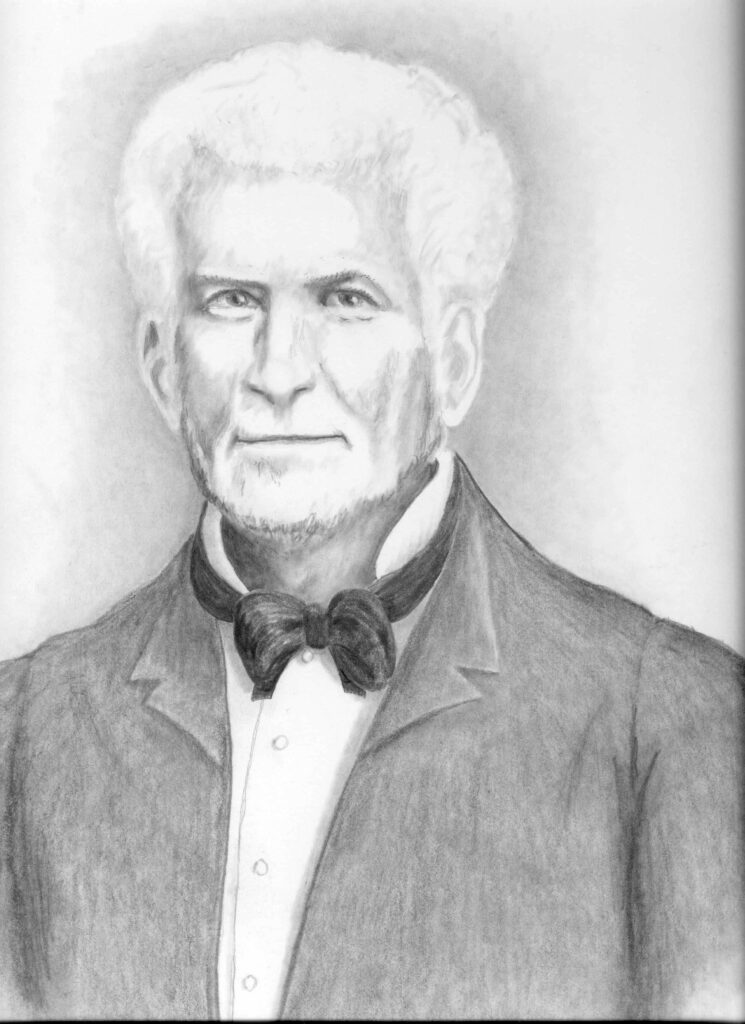
The First Baptist Church of Conyers traces its roots to 1836, and in 1852 Conyers Methodist Church opened its doors. Four years later, the Methodist church boasted a speaker named Alexander Stephens, the future vice president of the Confederacy.
On November 17, 1864, Morgan’s Division, 14th Corps, of the Left Wing of Union general William T. Sherman’s troops, camped in the area and set up its headquarters in Conyers, which the general visited. The Union forces were there to destroy the railroad lines from Lithonia to the Yellow River.
Six months later, the Union army, pursuing Confederate president Jefferson Davis, captured Confederate major general Joseph “Fightin’ Joe” Wheeler in Conyers. Wheeler fought in more cavalry battles than any other soldier during the Civil War (1861-65). His horse was shot out from under him sixteen times, and he had been wounded three times during the war. Released in Athens three days after his capture, Wheeler was rearrested and imprisoned at Fort Delaware until June 8, 1865. He would again serve with distinction in combat with the U.S. Army during the Spanish-American War (1898).
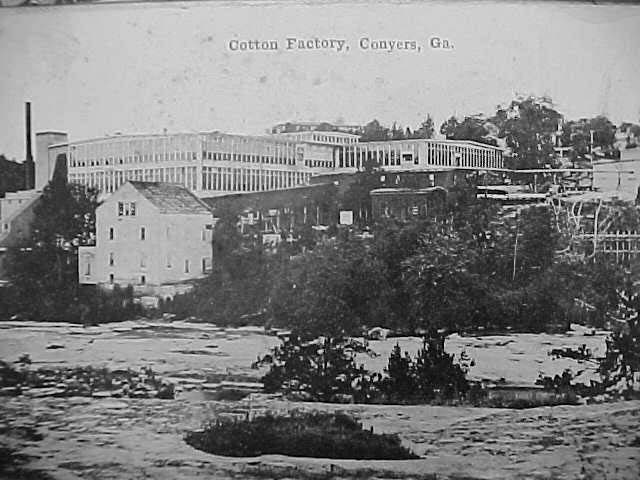
In 1870 the state legislature created Rockdale County, naming it for the granite strata that produced the rockyhills and dales in the area. Conyers, which had previously been part of Newton County, was included in the new county. By that time Conyers was populated with saloons, stores, a hotel, schools, and one college. “Sidewalk churches” dotted Main Street, and in 1878 the Methodist and Presbyterian churches held a joint revival—a tradition that continues today—which attracted more than 100 new members and resulted in the closing of nine saloons.
On August 24, 1881, Conyers was incorporated as a city with a mayor and six aldermen. A strong farming community, Conyers had an active Alliance Party, which held the first major demonstration in the city in 1889. By 1912 Conyers had electricity and its first waterworks.
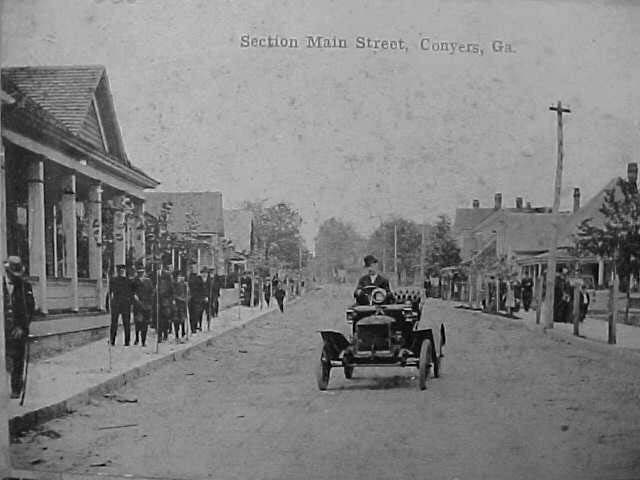
The town was also home to a successful mill community two miles north of “Olde Town” Conyers. In 1902 Frank Milstead founded a cotton mill, Milstead Manufacturing Company, on the site of an old Union Paper mill on the Yellow River. Milstead employed hundreds of workers in a community complete with its own housing, churches, schools, company store, and golfcourse. In 1904 Fuller Callaway was elected president of Milstead Manufacturing, and the following year the Callaway Company of LaGrange purchased a controlling interest in Milstead Manufacturing. In 1960 Callaway Mills closed Milstead, but the area is still a popular historic site with bungalow-style homes.
In 1944 twenty Cistercian or “Trappist” Catholic monks came to Conyers from Kentucky and now reside on a 2,000-acre plantation at the Monastery of the Holy Spirit, off Georgia Highway 212. About forty-five monks at the monastery raise revenue by producing and selling bonsai, pottery, fruitcake, fudge, and preserves. The monks hold daily public masses in the abbey church.

During the 1990s Conyers attracted worldwide attention for the religious experiences of Nancy Fowler, who lived on a local farm. From 1990 to 1994 Fowler claimed that the Virgin Mary appeared to her on the thirteenth day of each month with a message. Thousands of people came to the farm every month to hear the messages that were channeled through Fowler. From 1994 to 1998 Fowler received messages only on October 13. The final message was received in 1998.
The construction of Interstate 20 in the 1960s moved commercial development away from its original location at “Olde Town.” The city has preserved Olde Town, with its attorneys’ offices, specialty shops, and the original train depot. A 1905 Rogers steam locomotive named “The Dinky,” one of three in the world, remains permanently parked there. The revitalization of Olde Town included a new streetscape, pavilion, botanical gardens, and stream. In addition to the monastery, local attractions include the Georgia International Horse Park, built for the 1996 Olympic Games; the Lewis Vaughn Botanical Garden; and the Old Jail Museum. The Conyers Cherry Blossom Festival has become a popular yearly tradition.
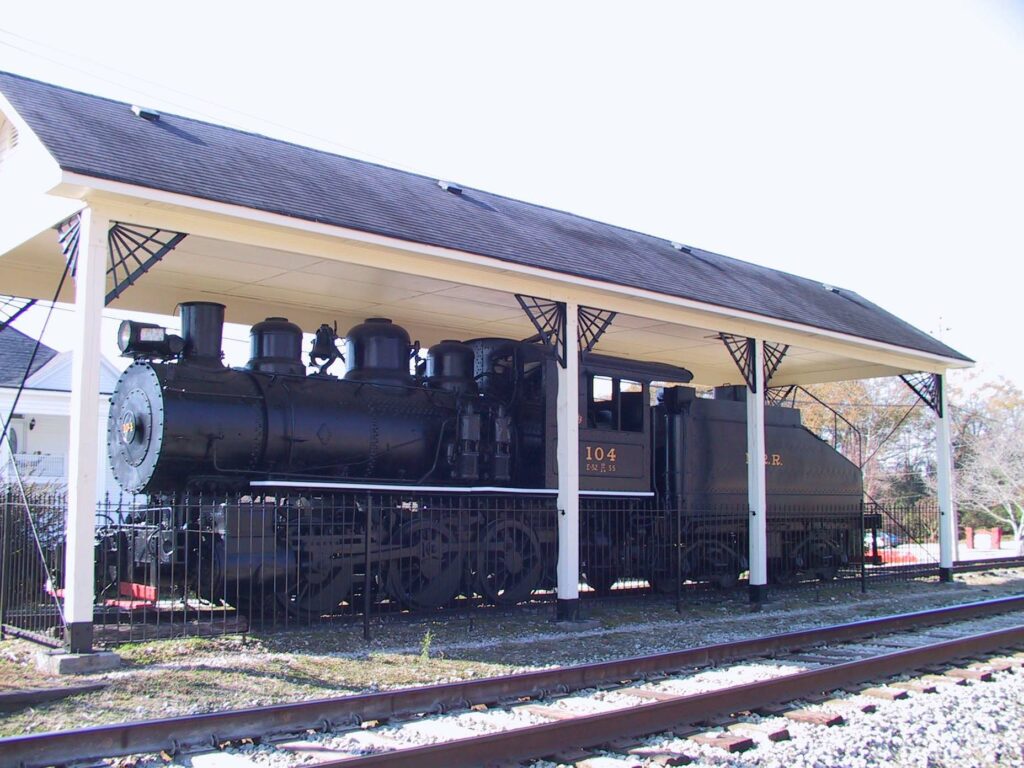
Conyers has strong links to the movie business. Actors Holly Hunter and Dakota Fanning are former residents. The city was also the filming location of Sweet Home Alabama (2002), False River (1999), and episodes of the television series The Dukes of Hazzard (1979-85), In the Heat of the Night (1988-94), and I’ll Fly Away (1991-93). Other notable residents have included singer Brenda Lee, World Cup soccer player Clint Mathis, and suffragist Sally Gleaton.
The local economy depends on manufacturing, education, health and social services, construction, and the retail trade.
According to the 2020 U.S. census, the population of Conyers was 17,305, an increase from the 2010 population of 15,195. With the arrival of Interstate 20 and the development of West Avenue and the interstate’s access roads, the city has become an important stopping point for travelers to and from Atlanta.









